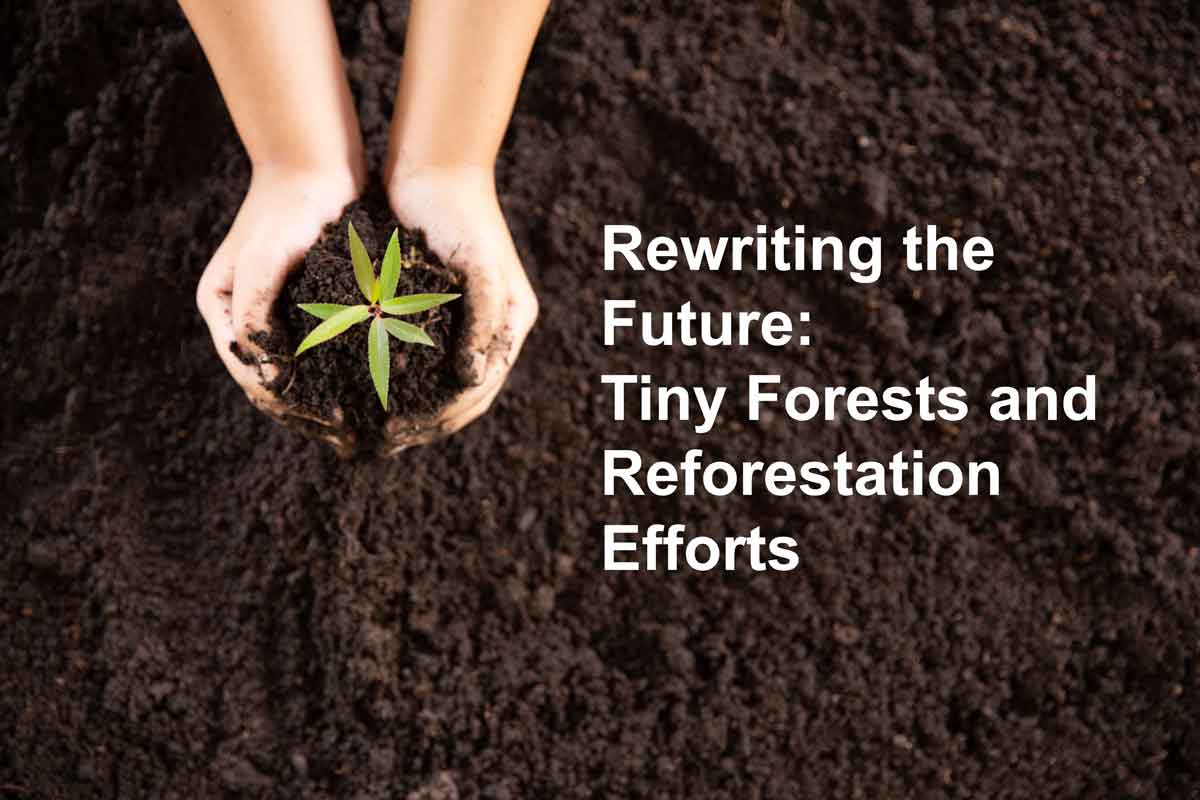Forests around the world are suffering, threatened by drought, extreme weather, and deforestation. It's a vocation and a calling to observe this damaged environment and recognize that we must restore the forest to give back to the world.
In a time when the world's forests are facing unprecedented challenges, there are individuals and organizations dedicated to rewriting this bleak narrative. They are pioneering innovative methods to save ancient woodlands and create new forests, even in the unlikeliest of places.
The Tiny Forest Revolution
One such innovator is Stefan Schaa, a 27-year-old forest scientist with a bold vision. Stefan, along with like-minded individuals, embarked on a journey to plant unique, new forests. They started just two years ago and have been making impressive strides ever since. Their approach involves creating miniature woodlands on small plots, and the results have been astounding.
These miniature forests are unlike traditional reforestation efforts. They plant native species close together, fostering competition for light, which causes them to grow at an accelerated rate. This concept, known as the "tiny forest," was developed by Japanese botanist Akira Miyawaki in the 1980s and is ideal for urban areas.
The Power of Tiny Forests
Tiny forests have the potential to reshape the way we approach reforestation. By planting a wide variety of tree species close together, these mini-ecosystems thrive from the start, without the decades-long process of soil development that natural forests require. These forests enrich the soil with nutrients, encouraging rapid growth.
A significant advantage of these miniature forests is their ability to store carbon. They sequester carbon dioxide (CO2) efficiently, capturing about as much carbon as 100 medium-sized cars produce while driving 100,000 kilometers annually. This is a powerful weapon in the fight against climate change.
Restoring Ancient Woodlands
In Brazil, a dedicated team is working tirelessly to save and restore ancient woodlands. Miriam Kutno and Vilo Chafa, descendants of German immigrants, have made it their life's mission to protect Brazil's coastal rainforest. The forest is known as the Mata Atlântica and is home to various species coveted by the timber industry.
The couple has been collecting seeds from giant jungle trees since the '70s, growing seedlings on their terrace. By 1987, they established the APAVI project, which aims to save and reforest forests in the region. The project has grown into a nonprofit tree nursery with a staff of 25, planting thousands of seedlings daily.
New Horizons: Integrating Indigenous Wisdom
In a unique approach to reforestation, researchers are now looking to indigenous communities for guidance. Indigenous groups, like the Kogi from Colombia, have a deep, intuitive understanding of their environment. They believe in the interconnectedness of nature and have knowledge that can complement traditional science.
By engaging with the Kogi and similar communities, researchers aim to gain new insights and strategies for forest restoration. These indigenous groups offer a perspective rooted in spirituality, energy fields, and a deep connection to nature. This holistic approach to reforestation can help create more effective and sustainable solutions.
A Tiny Forest for Everyone
Tiny forests are not just a dream; they're becoming a reality in many parts of the world. In Harford, Germany, an innovative project is bringing the concept of tiny forests to urban areas. Karina Lass, a journalist, and her team have launched an experiment to create a tiny forest in the midst of concrete and asphalt.
This project showcases the many benefits of tiny forests in urban environments. They act as green lungs, purifying the air, providing shade, and lowering air temperatures. By reducing pollutants and offering a space for biodiversity, tiny forests are making our cities more sustainable.
A Tiny Forest Movement
The success of these reforestation initiatives has sparked a movement. Tiny forests are no longer a niche concept but a growing trend. With the support of local governments and the enthusiasm of volunteers, these projects are popping up all over the world.
Poland recently welcomed its first tiny forest, and politicians are beginning to recognize the potential of this approach for urban climate adaptation. The desire for more tiny forests is spreading, and these small woodlands may be the key to a greener future.
Conclusion
Forests around the world are in dire need of help, and innovative approaches like tiny forests are providing a glimmer of hope. As individuals and communities join forces to reforest their surroundings, we have a chance to combat climate change, restore biodiversity, and create a more sustainable future.
Tiny forests represent a paradigm shift in reforestation efforts. They demonstrate that every tree counts in the fight against climate change and deforestation. By fostering competition among native species, enriching the soil, and storing carbon, these miniature ecosystems offer a powerful solution to the challenges our forests face.
FAQs
How are tiny forests different from traditional reforestation methods?
Tiny forests involve planting native species close together to foster competition for light, resulting in accelerated growth.
What benefits do tiny forests offer to urban areas?
Tiny forests purify the air, provide shade, and lower air temperatures in cities, making them more sustainable and improving biodiversity.
How do indigenous communities contribute to reforestation efforts?
Indigenous communities provide a holistic perspective on forest restoration, emphasizing spiritual connections and a deep understanding of the environment.
What role can tiny forests play in combatting climate change?
Tiny forests efficiently sequester carbon dioxide, capturing as much carbon as 100 medium-sized cars produce while driving 100,000 kilometers annually.
Are tiny forests becoming a global movement?
Yes, tiny forests are gaining popularity worldwide, with communities and governments embracing the concept for urban climate adaptation and reforestation efforts.
Get involved and be part of the solution. Plant a tiny forest, protect our ancient woodlands, and rewrite the future of our forests. Together, we can make a difference.







0 Comments